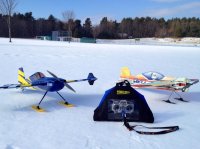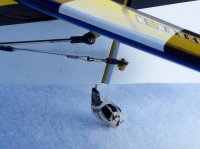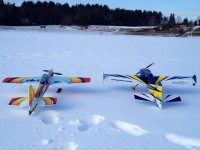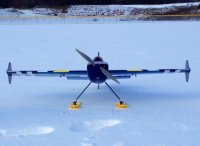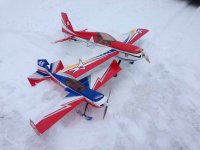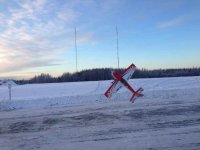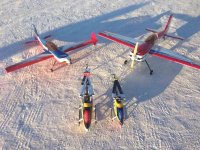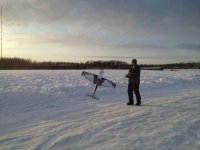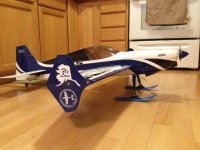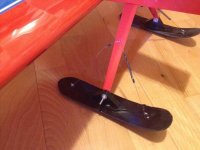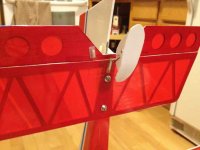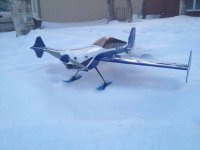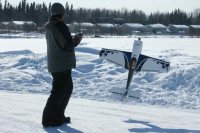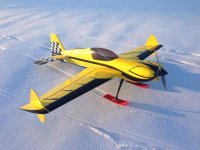So I thought I would post some tips I have picked up in two years flying electric in the Alaskan cold.
The "transmit" is super nice... although unless below -5F, I use gloves with the thumb and index fingers cut off. I work outside all winter long so my hands are acclimated to the cold. I also over dress for the cold, since when flying you are pretty inactive.
It is important to keep batteries warm until ready to fly... I keep them inside a warm truck and others use other forms of heating. If kept warm... batteries will keep temperature and unless real cold will get warm and flight time will not be sacrificed. Also, let batteries cool and if cold warm up before charging.
Cold servos draw more power in the cold... Make sure you have adequate power to your flight system. On my 500 pro running a Ice 75 with a 5 amp BEC the mini servos worked great all summer long, but as soon as temp got below 35F I had a brown out. I then installed a external CC 10amp BEC and haven't had a issue since. So unless 4 micro (65mg or equivalent) or less... I use a external BEC. Also, good pre checks are a must as I have burned up a few smaller servos when I haven't had a issue with them in the summer.
Skis are nice but not a must if you clear flying your flying area and do add weight that may not be beneficial to 3D. I use dubro skis but on my 48 and smaller airframes I cut them down removing 35 grams from the set. I change the system that keeps rotation put as the stock dubro system is garbage. I do remove all wheel pants so I don't break them.
I also don't push my airframes as hard as I do when warm temperatures are here. Although, I haven't had any issues with the two big 3D suppliers (Extreme Flight and 3DHS), I do this because materials gets brittle in the cold.

